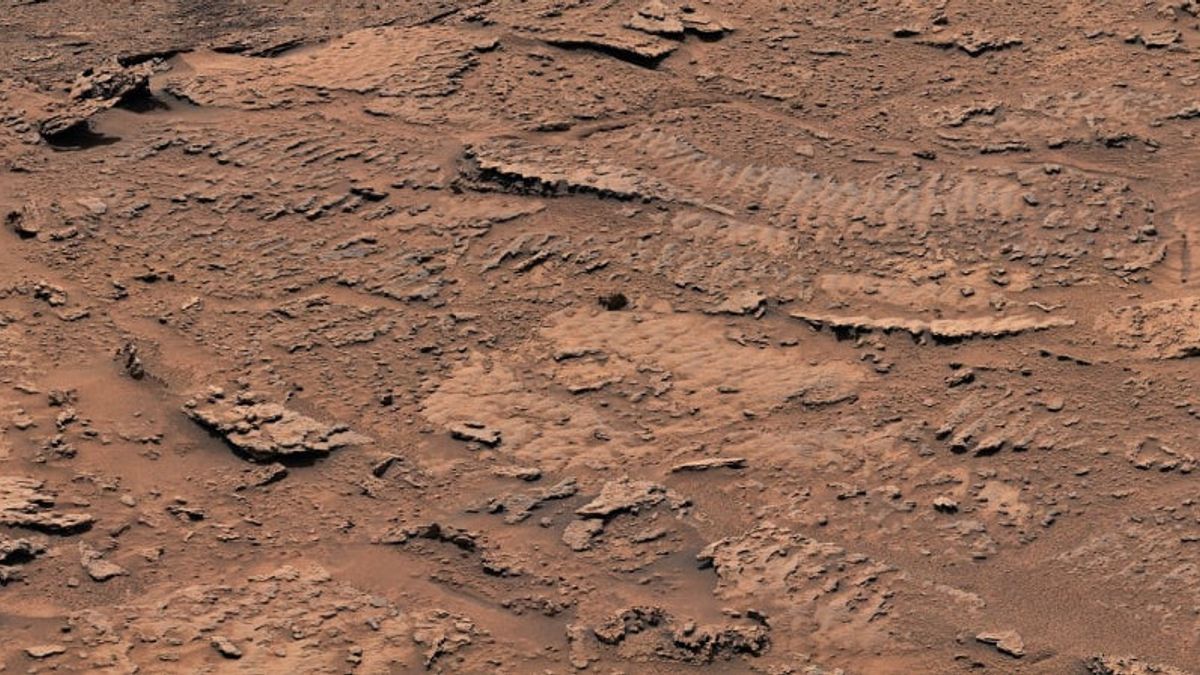JAKARTA - Scientists have again proven that Mars was once home to a lake, and increased the planet's confidence in a life-saving life.
Found by Mars' Curiosity rover robot, a shape of corrugated rock texture that indicates the presence of lakes on ancient Mars, an area estimated to form when the planet gets drier.
The area is full of salted minerals, perhaps remnants of dried water sprinkling. In this case, NASA said it happened billions of years ago, waves on the surface of the shallow lake mixed sediments basically.
Over time, according to NASA, sediments were formed into rocks with a rich texture which is the clearest evidence of waves and water that NASA's Mars Curiosity rover has ever found.
Last year, Curiosity also found evidence that the lake had covered the Martian region. So the rover project scientist was surprised when he discovered the ancient water ripples that formed in the lake.
"This is the best evidence of water and waves we've seen across the mission," said Curiosity project scientist at NASA's Jet Propulsion Laboratory in Southern California, Ashwin Vasavada.
"We climbed the lake deposits as high as thousands of feet and have never seen evidence like this and now we found it in a place we expected to dry out."
Since 2014, Curiosity has climbed the foot of Mount Sharp, a 5-kilometer-high mountain has found evidence that Mars has squeezed rivers and lakes that provide an environment for any microbial life and may exist on Mars.
After climbing nearly half a mile above the base of the mountain, Curiosity discovered a texture of the weathered rock preserved in the so-called Marker Band, a thin layer of dark rock that stands out from the remains of Mount Sharp.
Curiosity failed to drill into it to get samples despite having tried it several times, as this rock layer is very hard, as quoted from Metro, Tuesday, February 14.
However, deep ahead of the Marker Band, scientists can see other clues about the history of Martian ancient water in a valley called Gediz Vallis that is thought to have been eroded by a small river.
They suspect that the wet landslide incident also happened here, sending large stones and debris the size of a car to the bottom of the valley. There, scientists hope to find ancient evidence of water flow.
"Rake waves, debris flows, and rhythmic layers all tell us that Mars' wet-to-dry stories are not simple," explains Vasavada.
For information, last year scientists also found clear evidence of a 3.5 billion-year-old coastline with a thickness of about 900 meters, covering thousands of square kilometers using topographic data.
The rock collected by the Curiosity rover is also found to contain organic carbon that may come from insects that have explored Mars.
The English, Chinese, Japanese, Arabic, and French versions are automatically generated by the AI. So there may still be inaccuracies in translating, please always see Indonesian as our main language. (system supported by DigitalSiber.id)













